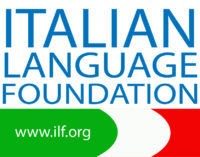Written by Margo Sorenson, author of over thirty traditionally-published books for young readers. Margo Sorenson spent the first seven years of her life in Spain and Italy, devouring books and Italian food and still speaks (or tries!) her childhood languages. Her most recent Adult/YA novel, SECRETS IN TRANSLATION (Fitzroy Books, October 2018), takes place in Positano, with many special Italian connections forged between people, especially because of their ability to speak Italian and to deeply appreciate the culture. www.margosorenson.com


“Once you open your mouth, and people hear your (Southern Italian) accent,” my parents told me, trying to be helpful, “people are going to think you really speak fluent Italian, and they’ll speak really fast, expecting you to understand.” Sure, I told myself. “Parents.” It was my very first trip back to Europe with my husband since I’d grown up there as a kid, so, even though I still studied and spoke Italian infrequently as an adult, I hadn’t been surrounded by a lot of people actually speaking Italian for years. I had no idea that my parents might be right. Because it was a trip with my husband’s company, our trip itinerary was primarily Germany and Austria, and a side-trip to Switzerland, so, to my disappointment, I didn’t think I’d have a chance to be speaking much Italian, anyway.

After being in Germany and Austria for a week, we had just left Lucerne, where everyone spoke Swiss-German. When we first arrived in Bellinzona, Switzerland, for the day, our tour guide gave us free reign and suggested we find the town’s medieval walls. Being a medieval history major, no one had to suggest that to me twice, so my patient husband and I took our tourist map and went off.
As luck would have it, we became lost almost immediately. I had forgotten that where we now were was Ticino, the Italian-speaking canton of Switzerland., so, when we found people who seemed to be locals, we tried to ask directions, first in English (I don’t speak German). That didn’t work, but they smiled and looked encouraging. Then, I tried my French. That didn’t work, either. Finally, in desperation, I tried Italian. Allora! The smiles broadened and they were delighted! My husband and I were delighted in turn—a language in common! Those of us who have had this happy circumstance occur know the feeling of joyful relief that flooded my husband and me. Yes, they spoke really fast, but after I used my “Mi dispiace—il mio Italiano non é buono,” they were more than helpful and even escorted us personally to our destination, chatting away. Being able to speak Italian had saved us again and helped us make a special connection. The warmth and generosity of Italian-speakers was confirmed for us, once more, and I felt at home.

That evening, in Lugano, when our tour group all walked into the hotel bar together, I saw several men look at us and say, “Ah, le donne americane vengono – che belle!” Then they kissed their fingertips (Italian men can be such flirts!). I started to smile to myself and looked at our tour group friends—and suddenly realized none of them could understand a word of what the men were saying: “Ah, American women are coming – how beautiful!” Not only that, the men speaking Italian had no idea that I could understand everything they said, either. Because I looked so obviously American and was with a group of other Americans, no one could even begin to imagine that I could understand the Italian language. Again, another language connection created a memorable encounter.

Besides the humorous connection, that moment illuminated for me, as an author, the typical question that authors love to ask themselves—”what if?” My “what if” question was, “What if you could understand and speak a language, but no one else knew you could? What if an American girl was fluent in Italian and could understand everything Italians were saying, but they didn’t realize she could—and because she could speak both languages, she solved a dark mystery involving limoncello producers and sabotage?” After many revisions, and lots of research and help from my Italian friends, SECRETS IN TRANSLATION was finally published and is now in the hands of readers. I am very grateful to those convivial men at the bar in Lugano who unknowingly began the whole process.
Italy is a beautiful country and the people are warm and generous, a perfect place to make the kind of heartwarming discovery that my heroine Alessandra is finally able to make in the book, and I hope SECRETS IN TRANSLATION resonates with readers of all ages. My wish is that readers will celebrate Italy, its beautiful, melodic language, and its special culture that has created so much of Western civilization’s precious legacy of artists, architects, composers, writers, musicians, and designers.

Speaking Italian enables us to tap into its precious culture and be more empathetic, something that is always a positive. Because Italy is near and dear to my heart (il cuore é italiano)—I am thrilled that SECRETS IN TRANSLATION is not a “secret” any longer, thanks to being able to understand and speak Italian.











